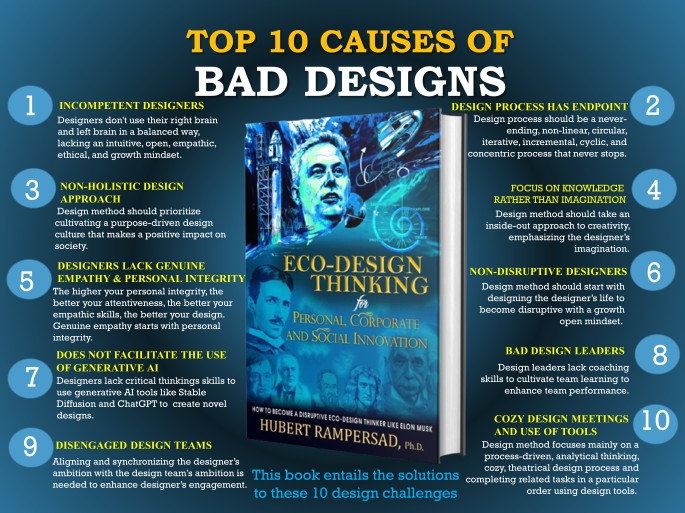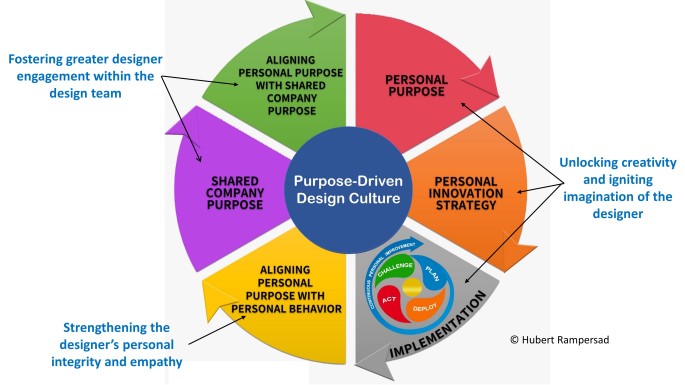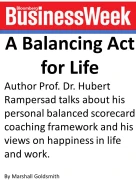“The one thing missing in design teams is a holistic view on cultivating a purpose-driven design culture to enhance design quality and performance” — Hubert Rampersad
The era of design thinking has come to an end. Read the MIT Technology Review article “Design thinking was supposed to fix the world. Where did it go wrong? An approach that promised to democratize design may have done the opposite” (2023).
Outdated design thinking has caused many bad designs; read “Top-10 Causes of Bad Designs”.

Corporate America has no shortage of complex problems that must be addressed. Therefore, we need to evolve beyond the traditional design approach. The design industry needs a radical new design approach that goes far beyond the original design thinking methodology; read “The End of Design Thinking: Cultivating a Purpose-Driven Design Culture to Fix the World.”
A Purpose-driven design culture requires a new generation of brilliant engineers
We need a new generation of brilliant engineers with a new mindset to design a better world and create a vibrant future. Engineering colleges and universities today do not commonly teach the skills that future engineers will need. Engineers must possess skills like creativity, imagination, agility, critical thinking, and sustainability to become visionary and innovative entrepreneurial leaders or to design innovative products. These skills are not typically associated with engineering, but the rapid rate of technological change has made most college and university courses obsolete by the time students graduate. Read “We Need a New Generation of Brilliant Engineers“.
STEM programs give engineers insights into science, technology, engineering, and mathematics. However, they often fail to nurture the holistic, authentic, and imaginative qualities essential for tomorrow’s engineers. Read “How STEM Education is Failing in the Age of AI”.
Complimentary Initial Consultation to Improve Your Design Process and Boost Design Team Performance
This free initial consultation will give valuable insights to elevate your design workflow and team effectiveness. Whether you’re refining your design process or seeking ways to enhance your design team’s effectiveness, this initial session sets the stage for success. Let’s explore how we can improve your design endeavors!
FREE INITIAL CONSULTATION
You can book a complimentary initial consultation to discuss your design needs. Our team is dedicated to providing customized guidance to enhance your design process and elevate your design team’s performance. Whether you’re seeking advice on refining your design approach or need coaching for your team, we’re here to assist you. Let’s collaborate and bring your design vision to life!
SCHEDULE A VIDEO CALL
Kindly select a convenient date and time for our upcoming Zoom meeting. During this session, we will explore the intricacies of your design project. Your input will enable us to formulate an initial plan for moving forward. Subsequently, we’ll prepare a comprehensive proposal that outlines the project timeline and associated costs. Looking forward to our productive discussion!
NON-DISCLOSURE AGREEMENT
Your privacy is of utmost importance to us. We maintain strict confidentiality and never share your information with third parties. If you’d like an extra layer of legal protection, request a Non-Disclosure Agreement (NDA) before our meeting. Thank you for entrusting us with your privacy!
Coaching your design leader and designers to enhance their team performance; the Coaching Framework.
Most design failures are caused by bad design leaders. The coaching framework involves ten steps, with comprehensive exercises, tools, and activities associated with each step. The coaching process starts with the introduction of this method via a plenary kick-off meeting, allowing design leaders and team members time for familiarization, followed by a minimum of ten 1-on-1 sessions of a maximum of two hours with individual design leaders and team members. This process is based on Hubert Rampersad’s latest book, “Eco-Design Thinking for Personal, Corporate, and Social Innovation.” It is also based on his experience as a senior design innovation coach at ASML, the most crucial tech company in the world and Europe’s most valuable tech firm, the only tech company in the world with a sustainable design-driven culture.
a maximum of two hours with individual design leaders and team members. This process is based on Hubert Rampersad’s latest book, “Eco-Design Thinking for Personal, Corporate, and Social Innovation.” It is also based on his experience as a senior design innovation coach at ASML, the most crucial tech company in the world and Europe’s most valuable tech firm, the only tech company in the world with a sustainable design-driven culture.
Steps in the Coaching Framework
The coaching framwork entails fourteen steps and is based on our purpose-driven design model:

- Plenary session for the design team leader and members to explain the holistic eco-design thinking model.
- Look for a quiet spot and perform the breathing and silence exercise to reflect on the personal purpose questions. This will create an atmosphere of silence to think about yourself and to listen to your inner voice.
- Formulate your personal purpose statement. Private life and business life should be considered.
- Define your strengths and weaknesses and the related external opportunities and threats based on your SWOT analysis. Evaluate yourself.
- Formulate your authentic personal brand statement and create your personal brand story. Learn how to use storytelling authentically. I recommend reading my article “Crafting Your Authentic Personal Brand: A 5-Step Guide“.
- Formulate your personal innovation strategy. Design your personal strategic map to coach yourself and enhance your critical thinking and imaginative skills.
- Implement your personal innovation strategy according to the Plan-Deploy-Act-Challenge cycle. Get going with the continuous improvement actions with dedication and resolution.
- Learn how to cultivate and maintain your personal purpose and innovation strategy to enhance your critical thinking skills and drive purpose and human-centeredness.
- Develop your personal integrity by aligning your personal purpose with your behavior (alignment with yourself). Learn how to live up to your your brand promise.
- Formulate your design code of ethics.
- Learn how to develop your team purpose.
- Align your personal purpose with the team purpose through the purpose meeting (alignment with your design team) to enhance team performance.
- Learn how to coach your design team members to formulate their personal purpose and innovation strategy and align with themselves and their team purpose.
- Coach the design leader to become an effective purpose-driven leader.
 For more information, please contact us at:
For more information, please contact us at:

Orlando, Florida | tpsi@live.com | Phone/WhatsApp: +13053992116
Hubert Rampersad, Ph., founded the Center of Excellence in Human-Centered and Purpose-Driven AI Innovation in Orlando. He is a Dutch-American visionary leader in innovative solutions for genuine sustainability, disruptive design innovation, critical thinking in the age of AI, human-centered and purpose-driven AI, and entrepreneurial leadership. He holds a Ph.D. in Innovation Sciences, an MSc in Technology Engineering & Robotics, and a BSc in Mechanical Engineering from leading accredited universities in the Netherlands (Delft University of Technology, Eindhoven University of Technology). He is a well-known futurist, advocating for genuine sustainability on a global scale. With extensive knowledge and expertise, he has authored 25 books on the topics above in many languages and is highly regarded for his insights in these fields. One of his books, “Total Performance Scorecard,” has been published in 20 languages. Dorothy Leonard, an innovation professor at Harvard Business School, wrote the book’s foreword. Rampersad has also previously served as a guest lecturer at MIT Sloan and was featured in BusinessWeek. He was a senior design innovation coach at ASML, the most important tech company in the world and “Europe’s most valuable tech firm. “







